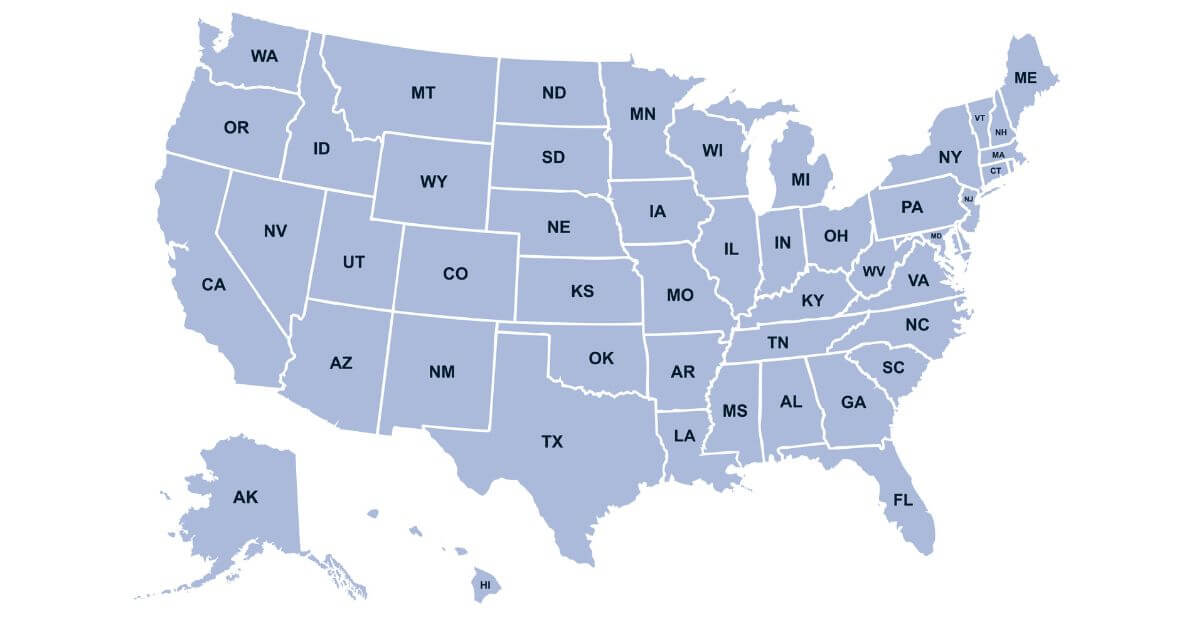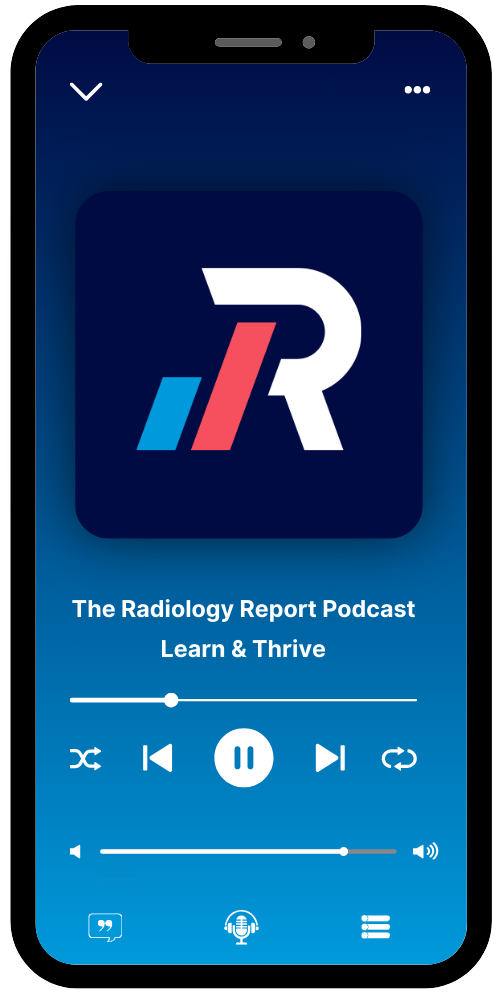Radiology is a constantly evolving medical field. Technological advancements and new techniques continuously shape the way diagnostic imaging is performed and interpreted to improve patient outcomes.
Continuing medical education (CME) plays a pivotal role in helping radiologists stay informed of the latest developments, refine their skills, and provide the highest level of care to their patients.
However, each state implements its own set of rules and regulations. Medical professionals can find themselves grappling with varying credit hour requirements, specific topic mandates, and diverse renewal cycles. Add separate conditions for maintaining certification for radiology specialties into the mix, and it can become daunting to keep track of it all.
This comprehensive guide helps demystify the process a bit by serving as a valuable resource for professionals seeking to maintain their licenses to remain compliant with their state’s respective licensing boards.
What is CME and why is it important?
CME refers to the ongoing educational activities that medical professionals must complete to maintain and enhance their knowledge, skills, and competence throughout their careers. CME helps radiologists keep pace with the rapid advancements in medical imaging technology, diagnostic techniques, and patient safety protocols.
Physicians must complete a specific number of credits each cycle to maintain their licensure and any certifications they hold. Staying up to date on advancements in radiology isn’t the only reason to engage in continuing education.
CME requirements by state are critical for several reasons, including:
What are the typical radiology CME state requirements?
Radiology CME requirements can vary significantly depending on your state of licensure and any specialized certifications. However, some general patterns and mandates exist for all radiologists regardless of where they practice.
Total Credit Hours
Most states require radiologists to complete between 25 and 50 credit hours of CME during each renewal period, which typically lasts two years. Some states may mandate as few as 20 credit hours while others insist on 75-plus credit hours.
Consult with your state licensing board and any certifying bodies to verify educational activities and hours for meeting CME. You can also check out our state-by-state requirements chart below.
Category-Specific Requirements
Many states mandate that a certain number of radiology CME credits must be earned in specific categories or topics.
Common category requirements include:
Accepted CME Activities
States generally recognize a variety of radiology CME activities as eligible for credit. One of the most popular ways to meet mandates is by attending live conferences, seminars, and workshops either in-person or online.
Other CME learning opportunities include:
Reporting and Documentation
Physicians are typically expected to maintain records of their CME activities, including certificates of attendance or completion for the recommended period. These records may need to be submitted during the license renewal process or to support your claims of CME completion during an audit.
Exemptions and Alternatives
Some state medical licensing boards offer exemptions or alternative pathways for meeting CME requirements under certain circumstances, such as:
How do CME requirements differ across states?
The chart below was designed to help physicians stay compliant and plan their continuing education activities. It provides a comprehensive breakdown of the latest radiology CME state requirements for each U.S. state and territory.
Use the chart to discover the total credit hours required, renewal cycle duration, specific topic area mandates, and accepted CME activities.
Source: Federation of State Medical Boards and AMA Ed Hub.
STATE | TOTAL CREDIT HOURS REQUIRED | RENEWAL CYCLE DURATION | SPECIFIC TOPIC MANDATES | ACCEPTED CME ACTIVITIES |
|---|---|---|---|---|
Alabama | 25 hours | Annually | Pain management, end-of-life care | Live activities, enduring materials, journal-based CME |
Alaska | 50 hours | Biennially | Pain management, opioid use | Live activities, online courses, workshops |
Arizona | 40 hours | Biennially | Store Domestic Violence, child abuse | Conferences, online modules, live webinars |
Arkansas | 20 hours | Annually | Prescribing education, pain management | Live activities, enduring materials, workshops |
California | 50 hours | Biennially | Pain management, geriatric care | Live courses, online CME, self-assessment modules |
Colorado | 25 hours | Annually | N/A | Conferences, online courses, journal-based CME |
Connecticut | 50 hours | Biennially | Risk management, behavioral health | Live activities, enduring materials, workshops |
Delaware | 40 hours | Biennially | Opioid prescribing, sexual harassment | Live activities, online courses, conferences |
Florida | 40 hours | Biennially | Medical errors, domestic violence | Live activities, enduring materials, webinars |
Georgia | 40 hours | Biennially | N/A | Live courses, online CME, self-study |
Hawaii | 20 hours | Biennially | N/A | Live activities, enduring materials, workshops |
Idaho | 40 hours | Biennially | Opioid prescribing, sexual harassment | Live activities, online courses, workshops |
Illinois | 150 hours | Triennially | Sexual harassment prevention, opioid prescribing | Live activities, enduring materials, webinars |
Indiana | 40 hours | Biennially | Opioid prescribing, abuse | Conferences, online modules, live webinars |
Iowa | 40 hours | Biennially | Child abuse, dependent adult abuse | Live activities, enduring materials, journal-based CME |
Kansas | 50 hours | Biennially | Pain management, palliative care | Live courses, online CME, self-study |
Kentucky | 60 hours | Biennially | Domestic violence, pediatric abusive head trauma | Live activities, enduring materials, workshops |
Louisiana | 30 hours | Annually | Pain management, substance abuse | Live activities, online courses, conferences |
Maine | 100 hours | Biennially | Opioid prescribing, palliative care | Live activities, enduring materials, webinars |
Maryland | 50 hours | Biennially | Cultural competence, opioid prescribing | Live activities, online courses, journal-based CME |
Massachusetts | 50 hours | Biennially | Pain management, end-of-life care | Live courses, online CME, self-study |
Michigan | 150 hours | Triennially | Pain management, human trafficking | Live activities, enduring materials, workshops |
Minnesota | 75 hours | Triennially | Pain management | Live activities, online courses, conferences |
Mississippi | 40 hours | Biennially | Pain management, opioid prescribing | Live activities, enduring materials, journal-based CME |
Missouri | 50 hours | Biennially | N/A | Live courses, online CME, self-study |
Montana | 50 hours | Biennially | N/A | Live activities, online courses, workshops |
Nebraska | 50 hours | Biennially | Opioid prescribing | Live activities, enduring materials, webinars |
Nevada | 40 hours | Biennially | Pain management, bioterrorism | Live activities, online courses, conferences |
New Hampshire | 100 hours | Biennially | Pain management, substance abuse | Live courses, online CME, self-study |
New Jersey | 100 hours | Biennially | Opioid prescribing, cultural competence | Live activities, enduring materials, workshops |
New Mexico | 75 hours | Triennially | Pain management, Palliative care | Live activities, online courses, journal-based CME |
New York | 50 hours | Biennially | Child abuse, Infection control | Live activities, online courses, conferences |
North Carolina | 60 hours | Biennially | Pain management | Live activities, enduring materials, webinars |
North Dakota | 60 hours | Triennially | Pain management | Live courses, online CME, self-study |
Ohio | 50 hours | Biennially | Pain management, ethics | Live activities, online courses, journal-based CME |
Oklahoma | 60 hours | Biennially | Pain management, ethics | Live activities, enduring materials, workshops |
Oregon | 60 hours | Biennially | Pain management, palliative care | Live courses, online CME, self-study |
Pennsylvania | 100 hours | Biennially | Pain management, child abuse | Live activities, online courses, conferences |
Rhode Island | 40 hours | Biennially | Pain management, substance abuse | Live activities, enduring materials, journal-based CME |
South Carolina | 40 hours | Biennially | Pain management, opioid prescribing | Live courses, online CME, self-study |
South Dakota | 50 hours | Biennially | Pain management, palliative care | Live activities, online courses, workshops |
Tennessee | 40 hours | Biennially | Pain management, prescribing education | Live activities, enduring materials, webinars |
Texas | 48 hours | Biennially | Medical ethics, pain management | Live courses, online CME, self-study |
Utah | 40 hours | Biennially | Pain management, opioid prescribing | Live activities, online courses, conferences |
Vermont | 50 hours | Biennially | Pain management, palliative care | Live activities, enduring materials, workshops |
Virginia | 60 hours | Biennially | Biennially | Live activities, online courses, journal-based CME |
Washington | 200 hours | Biennially | Pain management, suicide prevention | Live activities, online courses, conferences |
West Virginia | 50 hours | Biennially | Pain management, end-of-life care | Live courses, online CME, self-study |
Wisconsin | 30 hours | Biennially | Pain management, palliative care | Live activities, enduring materials, workshops |
Wyoming | 40 hours | Biennially | Pain management | Live activities, online courses, journal-based CME |
*Each professional is accountable for understanding his or her accrediting/licensing body’s standards and requirements. While we do our best to keep this page up-to-date, it’s important to double-check with your accrediting or licensing body for the most current requirements as information is subject to change without notice.
How do radiologists fulfill CME requirements efficiently?
Fulfilling CME requirements is time-consuming and poses challenges for busy physicians with demanding clinical schedules. Proper planning and a strategic approach can help radiologists meet CME obligations efficiently while minimizing disruptions to patient care.
Some tips and practical strategies include:
Consequences of non-compliance
Failing to comply with CME requirements for your state has serious consequences. The worst-case scenario is you lose your ability to practice and professional standing in the medical community.
Some of the other consequences of non-compliance include:
Stay up to date with CME requirements
Embracing a proactive approach to CME safeguards your ability to practice and reflects a deep commitment to providing the highest quality of care to patients. Expanding their knowledge and refining their skills allows radiologists to stay at the forefront of their profession, contributing to improved diagnostic accuracy, patient safety, and overall healthcare outcomes.
Let Medality help you complete your required CMEs without adding more stress to your routine. Visit our microlearning course library to complete courses that meet CME requirements for your state.




